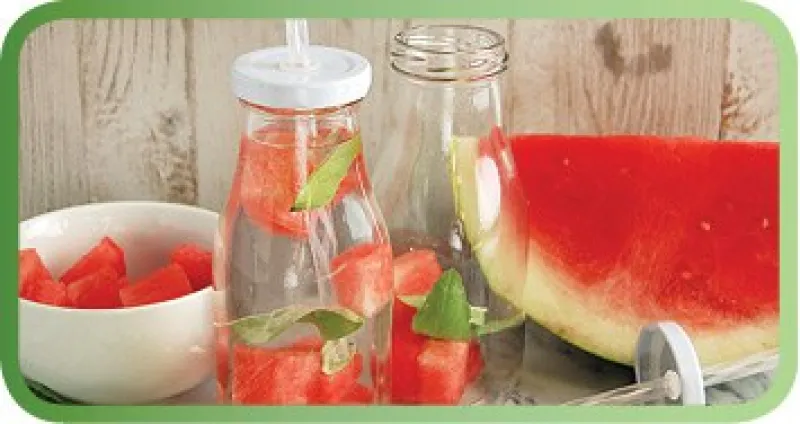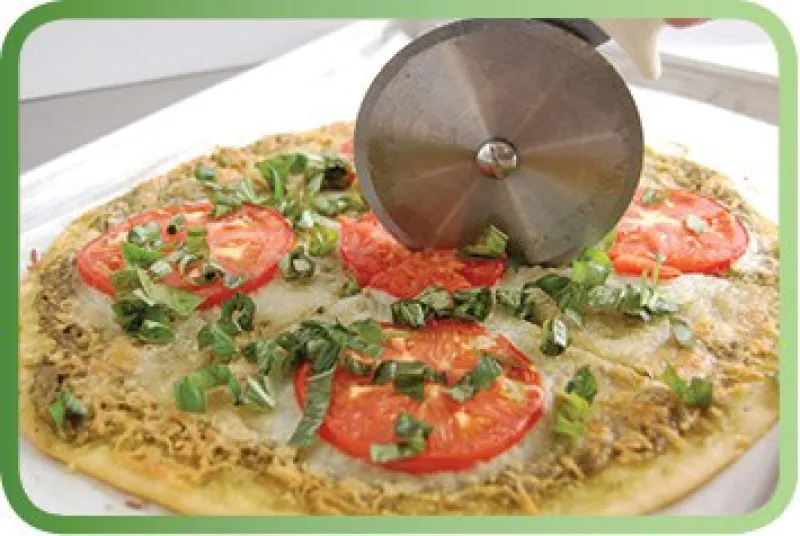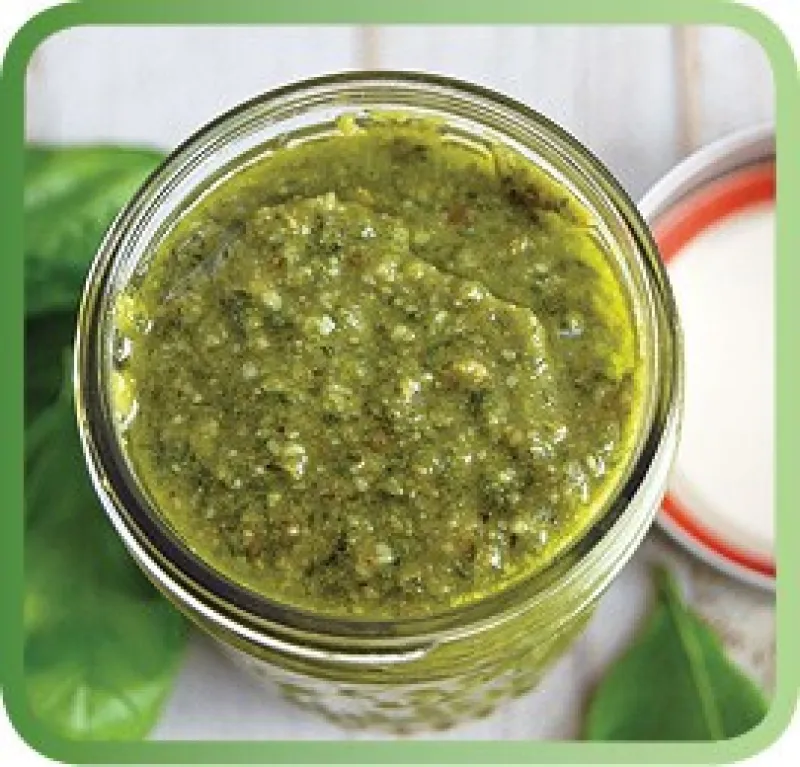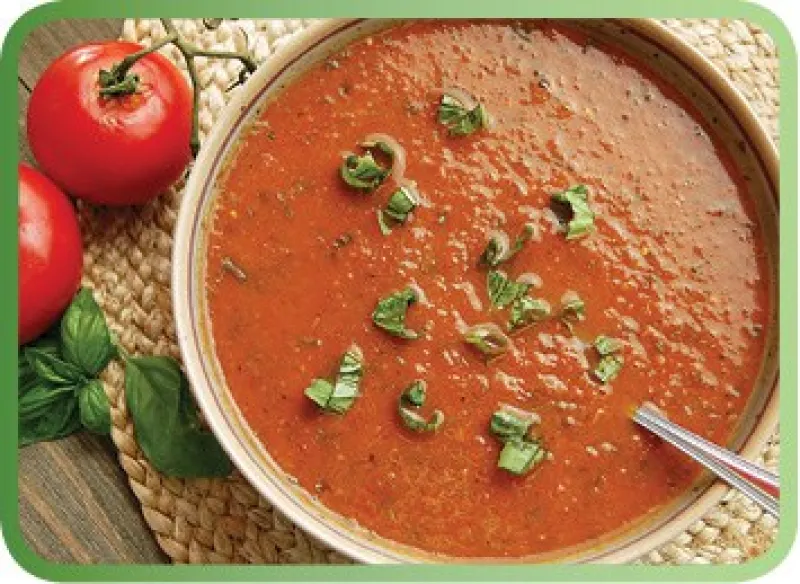Key to abbreviations
c. = cup
g = gram
oz. = ounce
tsp. = teaspoon
mg = milligram
lb. = pound
Tbsp. = tablespoon
kg - kilogram
Basil and Watermelon-infused Water
1 c. cubed watermelon
1 quart water
3 basil leaves
Place watermelon and basil in water and chill in refrigerator for two hours.
Makes about four (1 cup) servings. Each serving has 10 calories, 0 g fat, 0 g protein, 3 g carbohydrate, 0 g fiber and 10 mg sodium.
Margherita Pizza
1 pizza dough
5 Tbsp. basil pesto
1 c. shredded mozzarella
2 to 3 tomatoes, sliced
1 Tbsp. olive oil
⅛ tsp. salt
2 Tbsp. fresh basil, shredded or finely chopped
Prepare homemade or store-bought pizza dough per instructions. Preheat oven to 425 F. Shape the dough onto a lightly greased pizza or sheet pan, spread the pesto on the dough, then top with shredded mozzarella and sliced tomatoes. Drizzle with a tablespoon of olive oil and salt. Bake for approximately 10 to 12 minutes or until crust is baked and cheese is melted. Top with basil just before serving.
Makes eight servings. Each serving has 250 calories, 13 g fat, 9 g protein, 25 g carbohydrate, 1 g fiber and 540 mg sodium.
Basil Pesto
4 oz. pine nuts
4 c. fresh basil
3 garlic cloves
1 c. grated Parmesan cheese
1 Tbsp. lemon zest
1 tsp. lemon juice
1 c. olive oil
¼ tsp. salt
⅛ tsp. ground pepper
Add the pine nuts to a small skillet over medium heat and toast until golden brown. In the bowl of a food processor, add half the pine nuts, 3 cups basil, 2 garlic cloves, ½ cup cheese and lemon zest. Process the ingredients on lowest setting. Slowly drizzle in ¾ cup of olive oil and continue processing until a smooth paste begins to form. Stop the food processor and scrape down the sides of the bowl. Add the remaining pine nuts, basil, garlic, cheese, olive oil and lemon juice to the bowl. Pulse the ingredients until finely chopped. Season with salt and pepper to taste.
Makes 32 (1 tablespoon) servings. Each serving has 100 calories, 10 g fat, 2 g protein, 1 g carbohydrate, 1 g fiber and 75 mg sodium.
Rustic Tomato Basil Soup
2½ lb. fresh, ripe tomatoes, halved
4 Tbsp. olive oil
½ Tbsp. salt
1 tsp. black pepper, plus more to taste
2 medium onions, chopped
10 garlic cloves, chopped
2 (14.5-oz.) cans fire roasted tomatoes with juices
3 c. fresh basil leaves, lightly packed
2 tsp. dried oregano
6 c. unsalted vegetable stock
1 tsp. sugar, depending on sweetness of tomatoes
Preheat oven to 400 F. In a large rimmed sheet pan, combine the tomatoes, 2 tablespoons of olive oil, salt and pepper. Roast in an even layer for 45 to 60 minutes. While tomatoes are roasting, in a heavy large pot, sauté onions in olive oil for one minute. Add garlic and sauté another minute. Add the fire-roasted tomatoes with juices, fresh basil, oregano and vegetable stock. Stir to combine well. Add your oven-roasted tomatoes (and any liquid that may be on baking sheet) and bring to a low boil. Boil for 30 minutes uncovered. Use an immersion blender to puree soup until desired texture. Add 1 teaspoon of sugar to taste, if needed. Add additional salt and/or black pepper as needed.
Makes 12 (1 cup) servings. Each serving has 100 calories, 5 g fat, 2 g protein, 12 g carbohydrate, 2 g fiber and 510 mg sodium.
Funding for this publication was made possible by the U.S. Department of Agriculture’s Agricultural Marketing Service through grant AM170100XXXXG005. Its contents are solely the responsibility of the authors and do not necessarily represent the official views of the USDA.




